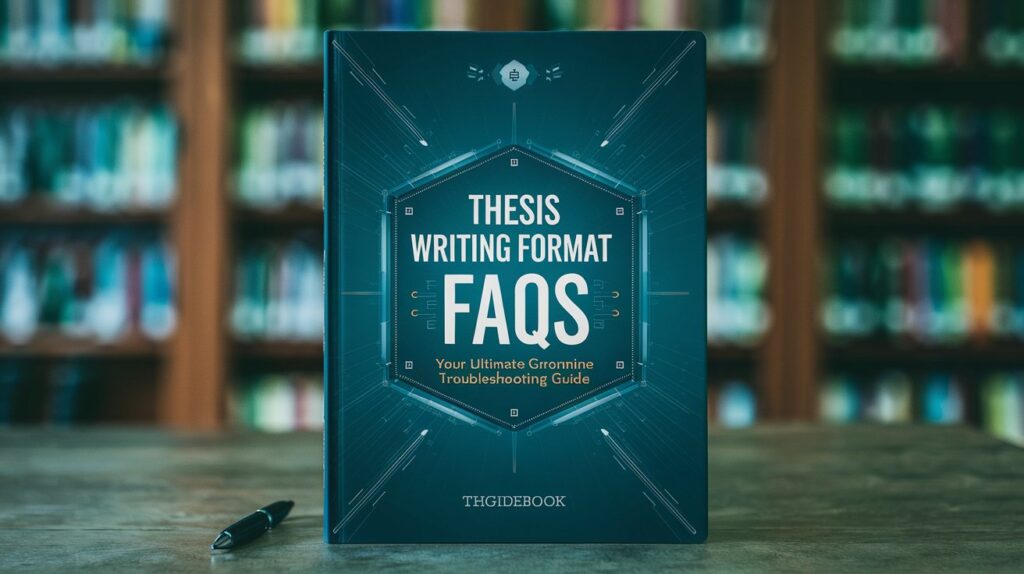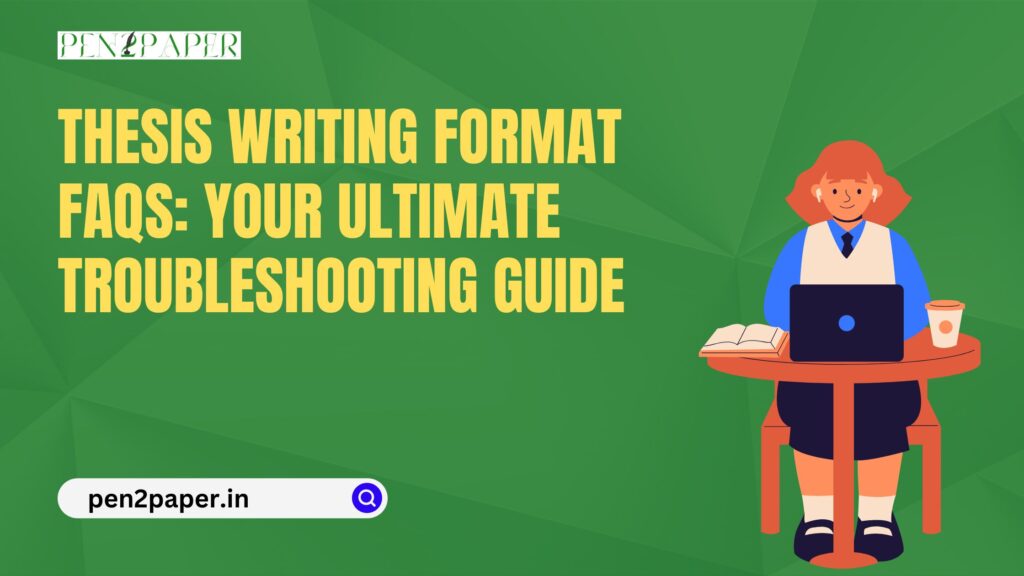When it comes to academic success, mastering the thesis writing format is crucial. A well-structured thesis reflects your research efforts and ensures you adhere to academic standards. If you find yourself struggling with formatting your thesis, this guide will answer your most pressing questions and help you navigate through the challenges.
Let’s explore the most frequently asked questions (FAQs) about thesis writing format and how you can troubleshoot common issues effectively.

What Is a Thesis Writing Format?
The thesis writing format refers to the specific structure, guidelines, and presentation style required for academic thesis. It includes aspects such as:
- Title page
- Abstract
- Table of contents
- Introduction
- Literature review
- Methodology
- Results and discussion
- Conclusion
- References and citations
- Appendices
Each university or academic institution may have its own thesis formatting guidelines. Be sure to consult your institution’s handbook or website for precise details.
Why Is Thesis Writing Format Important?
A proper thesis writing format ensures clarity, professionalism, and adherence to academic standards. It impacts how your work is perceived by professors, reviewers, and potential publishers. A poorly formatted thesis can lead to:
- Lower grades
- Delays in acceptance
- Negative feedback from reviewers
By adhering to the correct format, you showcase your attention to detail and dedication to academic excellence.
FAQs About Thesis Writing Format
1. What Font and Size Should I Use?
Most academic institutions recommend using a legible font such as Times New Roman, Arial, or Calibri in size 12 for the main text. For headings, bold or slightly larger fonts are acceptable, but avoid overcomplicating the design.
2. How Should I Structure the Title Page?
The title page typically includes:
- Thesis title
- Author’s name
- Academic institution
- Department
- Supervisor’s name
- Date of submission
Ensure the title is concise and accurately reflects your research topic.
3. How Do I Format the Abstract?
The abstract is a brief summary of your thesis, usually around 150-300 words. It should:
- Highlight the research problem
- Summarize key findings
- Mention the methodology used
The abstract is often written in a single paragraph without any citations.
4. What Are the Margins and Spacing Requirements?
Standard thesis writing format guidelines recommend:
- Margins: 1 inch on all sides
- Line spacing: 1.5 or double spacing
- Paragraph indentation: 0.5 inches
These ensure your document is readable and meets academic standards.
5. How Do I Organize Citations and References?
Citations and references should follow the style specified by your institution, such as:
- APA (American Psychological Association)
- MLA (Modern Language Association)
- Chicago/Turabian
- IEEE (Institute of Electrical and Electronics Engineers)
Use citation management tools like Zotero, EndNote, or Mendeley to streamline this process.
6. What Is the Role of Headings and Subheadings?
Headings and subheadings improve the readability and organization of your thesis. A typical structure might include:
- Level 1 Headings: Bold, larger font size
- Level 2 Headings: Bold, same font size as the text
- Level 3 Headings: Italicized
Ensure consistency in their application throughout the document.
7. How Should I Format Tables and Figures?
Tables and figures are essential for visualizing data. Follow these tips:
- Label each table and figure clearly (e.g., “Table 1: Demographic Data”).
- Place labels above tables and below figures.
- Include a descriptive caption.
- Use consistent numbering.
8. How Do I Avoid Plagiarism in the Thesis Writing Format?
Plagiarism can lead to severe academic consequences. To avoid it:
- Paraphrase information and cite sources.
- Use plagiarism detection tools like Turnitin.
- Provide proper attribution for quotes, data, and images.
9. How Can I Ensure Consistency in Formatting?
Use software tools like Microsoft Word or LaTeX, which provide formatting templates for academic papers. Features like:
- Styles for headings
- Automatic table of contents
- Citation tools
…can significantly reduce formatting errors.
10. What Are Common Thesis Formatting Errors to Avoid?
- Inconsistent font styles and sizes
- Incorrect or missing citations
- Poorly formatted tables and figures
- Ignoring institutional guidelines
- Typos and grammatical errors
Thesis Writing Format Tips and Tricks
Start Early
Formatting a thesis takes time. Begin organizing your document as soon as you start writing. This minimizes last-minute stress.
Use Templates
Many universities provide thesis templates that include pre-formatted sections. These save time and ensure compliance with institutional requirements.
Seek Professional Help
If you’re struggling, consider hiring professional thesis formatting services like Pen2Paper. These experts ensure your thesis adheres to academic standards while you focus on your research.
Review Thoroughly
Before submission, proofread your thesis to catch formatting inconsistencies, typos, and errors. Peer reviews can also provide valuable feedback.
Conclusion
Mastering the thesis writing format is a critical aspect of academic success. By understanding the requirements and following best practices, you can create a polished, professional document that highlights your research efforts. Use the FAQs and tips in this guide to troubleshoot common challenges and streamline the formatting process.
Remember, a well-formatted thesis not only enhances readability but also leaves a positive impression on evaluators. Start early, stay organized, and don’t hesitate to seek help if needed.
Perfect your thesis writing format today and achieve the academic excellence you deserve!
